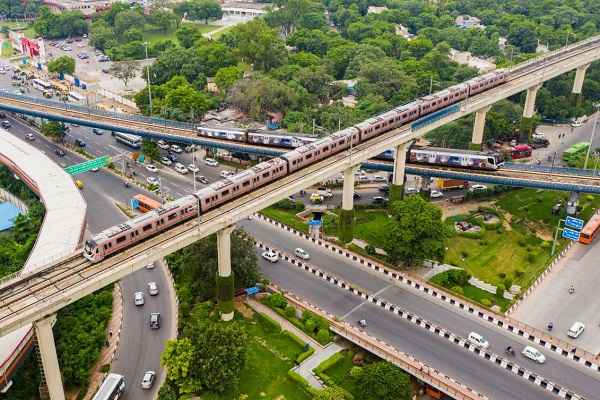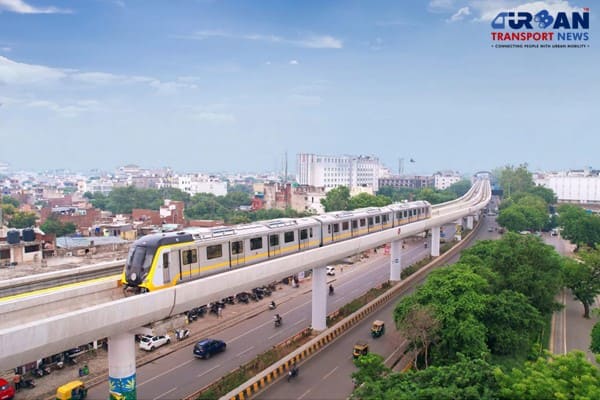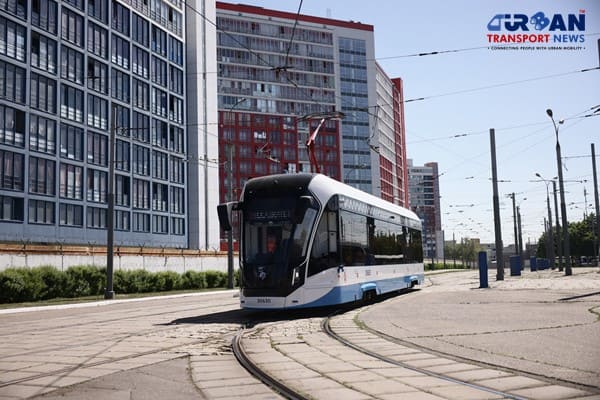 Delhi unveils ambitious Urban Mobility Vision: Luxury Metro Coaches, New Tunnels and Pod Taxi
Delhi unveils ambitious Urban Mobility Vision: Luxury Metro Coaches, New Tunnels and Pod Taxi Qatar approves Saudi Rail Link Agreement, Accelerating Gulf Railway Vision 2030
Qatar approves Saudi Rail Link Agreement, Accelerating Gulf Railway Vision 2030 UP Govt plans to introduce Water Metro services in Ayodhya, Varanasi & Prayagraj
UP Govt plans to introduce Water Metro services in Ayodhya, Varanasi & Prayagraj India’s First Urban Ropeway begins Trial Run in Varanasi, Set to carry 1 Lakh passengers daily
India’s First Urban Ropeway begins Trial Run in Varanasi, Set to carry 1 Lakh passengers daily India and Bhutan to Build First-Ever Rail Link: ₹4,033 Cr Project to Boost Regional Connectivity
India and Bhutan to Build First-Ever Rail Link: ₹4,033 Cr Project to Boost Regional Connectivity Patna to launch Eco-Friendly Water Metro; Trial Run soon between Digha and Kangan Ghats
Patna to launch Eco-Friendly Water Metro; Trial Run soon between Digha and Kangan Ghats Air India Group set to launch Flights Operations from Navi Mumbai International Airport
Air India Group set to launch Flights Operations from Navi Mumbai International Airport Chennai to launch 25-Year Mobility Plan with Unified QR Ticketing and One-App Transit System
Chennai to launch 25-Year Mobility Plan with Unified QR Ticketing and One-App Transit System Kochi Metro bags ₹4.4 crore contract to prepare DPR for Mumbai Water Metro Proejct
Kochi Metro bags ₹4.4 crore contract to prepare DPR for Mumbai Water Metro Proejct Navi Mumbai International Airport set for September launch; IndiGo and Akasa Air to lead Operations
Navi Mumbai International Airport set for September launch; IndiGo and Akasa Air to lead Operations
Urban Planning and Metro Rail Integration: Designing Cities for effective Public Transit

Urban planning plays a crucial role in shaping cities and their transportation systems. With the rapid urbanization and the increasing need for sustainable mobility, the integration of metro rail systems into urban planning has become paramount. This article explores the significance of urban planning in designing cities that effectively incorporate metro rail, resulting in efficient public transit systems.
The Importance of Urban Planning in Public Transit Integration
Effective urban planning is essential for creating well-connected cities that cater to the needs of a growing population. By integrating metro rail systems into urban planning, cities can enhance public transit options, reduce traffic congestion, and improve the overall quality of life for residents.
Benefits of Metro Rail Integration
Improved Connectivity: Metro rail networks provide seamless connectivity across various parts of the city, reducing travel times and increasing accessibility. Urban planning that incorporates metro rail ensures that stations are strategically located to serve densely populated areas, business districts, and other important destinations.
Reduced Traffic Congestion: Metro rail systems help alleviate traffic congestion by offering an efficient alternative to private vehicles. Integrating metro rail into urban planning encourages commuters to switch from cars to public transit, resulting in reduced congestion on roadways.
Environmental Sustainability: Metro rail is a sustainable mode of transportation that significantly reduces greenhouse gas emissions compared to private vehicles. By integrating metro rail systems into urban planning, cities can prioritize environmentally friendly transportation options and work towards a greener future.
Principles of Metro Rail Integration in Urban Planning
Transit-Oriented Development (TOD): Urban planning should prioritize the development of mixed-use neighborhoods around metro rail stations. TOD promotes pedestrian-friendly environments, with residential, commercial, and recreational spaces within walking distance of stations. This approach encourages transit ridership and reduces dependency on private vehicles.
Last-Mile Connectivity: Urban planning should address the crucial last-mile connectivity challenge by providing convenient options such as bike-sharing programs, pedestrian pathways, and feeder bus services. Seamless integration between metro rail stations and other modes of transport encourages people to choose public transit as their preferred mode of travel.
Land Use Planning: Coordinating land use planning with metro rail integration ensures that development is concentrated around transit corridors. By strategically allocating land for mixed-use developments near metro rail stations, cities can optimize land utilization, promote vibrant communities, and support local businesses.
Case Studies and Success Stories
Highlight successful examples of cities that have effectively integrated metro rail systems into their urban planning. Discuss how these cities have witnessed positive impacts such as increased ridership, reduced congestion, and improved urban livability.
Conclusion
Urban planning plays a pivotal role in the integration of metro rail systems, ultimately shaping cities for effective public transit. By considering principles such as transit-oriented development, last-mile connectivity, and land use planning, cities can design transportation networks that are sustainable, accessible, and beneficial for residents. The seamless integration of metro rail into urban planning not only enhances mobility but also contributes to a greener and more livable urban environment.
Remember, effective urban planning and metro rail integration require a comprehensive and collaborative approach involving government agencies, urban planners, transportation experts, and community stakeholders. By working together, we can create cities that prioritize public transit, reduce reliance on private vehicles, and provide a better quality of life for all residents.






